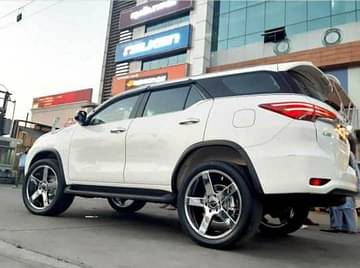
The Ultimate Guide to Car, Truck, and SUV Tires and Wheels
Your tires and wheels serve as the foundation of your vehicle’s performance. From grip and cornering to ride smoothness and fuel economy, the correct setup plays a critical role in how your vehicle behaves on the road. Whether you’re replacing worn-out tires or looking to upgrade for visual appeal or performance gains, understanding the best choices for cars, trucks, and SUVs will help you avoid costly mistakes and improve your driving experience.
For car owners, tire selection often centers around ride comfort, road noise, and fuel efficiency. All-season tires are the most common choice, offering year-round performance in mild conditions. If you drive in an area with frequent snow or rain, consider touring tires or performance all-seasons that offer better wet grip and hydroplaning resistance. Lightweight alloy wheels not only improve looks but also reduce unsprung weight, leading to more responsive handling. Just be sure to choose wheels with the correct bolt pattern and offset to avoid rubbing or clearance issues.
Trucks have very different needs. If you're towing, hauling heavy loads, or traveling off-road, you’ll need tires built to withstand those demands. All-terrain (A/T) tires offer a good compromise between highway comfort and off-road capability, while mud-terrain (M/T) tires feature aggressive tread for superior traction in loose surfaces. Paired with steel or rugged alloy wheels, these tire types provide confidence in challenging environments. Make sure to check load index and speed ratings carefully when choosing truck tires, especially for work or commercial applications.
SUV drivers often straddle the line between passenger car comfort and truck-level utility. Because of their higher weight and center of gravity, SUVs benefit from tires with reinforced sidewalls and tread patterns designed for both highway and light off-road use. Look for all-season or highway terrain tires that reduce noise and improve fuel economy without sacrificing traction. When upgrading wheels, choose diameters that match your tire profile to avoid impacting ride comfort or speedometer accuracy. Avoid oversized wheels unless you’re willing to accept a firmer ride and reduced sidewall protection.
To maximize your investment, take tire and wheel maintenance seriously. Start by checking tire pressure monthly using a digital gauge, and rotate them based on your drivetrain layout (front-, rear-, or all-wheel drive). Don’t forget to inspect the wheels for curb rash, bent lips, or corrosion, especially if you’ve hit potholes. Balancing and alignment should Explore more be performed annually or after any major suspension service. These simple steps ensure even wear, better handling, and longer lifespan.
Ultimately, tires and wheels are more than just accessories—they're critical to your safety and driving experience. Always purchase from a trusted retailer or tire shop, and when in doubt, consult your vehicle’s manual or a tire professional. Avoid mixing tire types, and don’t neglect things like speed ratings or load indexes. The right setup not only boosts your vehicle’s capabilities but also protects your passengers and cargo. Investing in quality rubber and metal is one of the smartest decisions any driver can make.